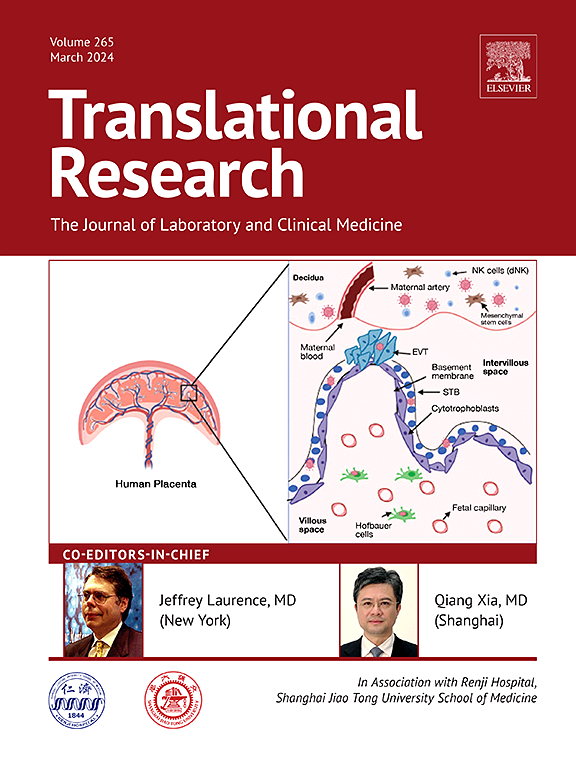Platelet bound B cells and their role in SSc: Implications for disease subtypes and clinical outcomes
IF 5.9
2区 医学
Q1 MEDICAL LABORATORY TECHNOLOGY
引用次数: 0
Abstract
Objectives
Systemic sclerosis (SSc) is a complex autoimmune disease characterized by microvascular damage, immune dysregulation, and tissue fibrosis. While lymphocyte-platelet (PLT) complexes have been implicated in autoimmune diseases, their role in SSc is not well understood. Methods: In a study of 21 predominantly female SSc patients, 66.7 % had limited SSc (lcSSc), with anti-centromere antibodies (ACA) being the most common autoantibody pattern. We applied flow cytometry to analyze B cells with bound PLTs, enzyme-linked immunosorbent assay (ELISA) to determine plasma levels of activated PLT soluble factors, and co-culture assays to evaluate B cell cytokine secretion and plasma cell differentiation. Results: SSc patients had a higher percentage of B cells, but not T cells, with bound PLTs compared to healthy donors (HD). Despite similar PLT counts, SSc patients showed higher plasmatic levels of P-selectin (CD62P), soluble CD40 ligand (sCD40L), platelet-derived growth factor (PDGF), and transforming growth factor–β (TGF-β). Plasma IL-10 levels were also higher in SSc patients, with increased intracellular IL-10 in B cells with bound PLTs. We observed an increased IL-10 production and plasma cell differentiation when B cells were co-cultured with PLTs, especially from SSc patients. B cells with bound PLTs were associated with calcinosis, digital ulcers, and ACA status, with no effect from previous corticosteroid or aspirin therapy. Logistic regression identified B cells with bound PLTs as a predictor for distinguishing lcSSc patients. Conclusions: B cells with bound PLTs play a significant role in SSc by modulating B cell function and contributing to disease pathogenesis. Their association with clinical parameters suggests their potential as biomarkers for disease severity and subtype classification in SSc.
血小板结合B细胞及其在SSc中的作用:对疾病亚型和临床结果的影响
目的:系统性硬化症(SSc)是一种以微血管损伤、免疫失调和组织纤维化为特征的复杂自身免疫性疾病。虽然淋巴细胞-血小板(PLT)复合物与自身免疫性疾病有关,但它们在SSc中的作用尚不清楚。方法:在21例以女性为主的SSc患者的研究中,66.7%的患者有局限性SSc (lcSSc),抗着丝粒抗体(ACA)是最常见的自身抗体模式。我们应用流式细胞术分析结合PLT的B细胞,酶联免疫吸附法(ELISA)测定活化PLT可溶性因子的血浆水平,共培养法评估B细胞细胞因子分泌和浆细胞分化。结果:与健康供者(HD)相比,SSc患者具有更高的结合plt的B细胞百分比,而不是T细胞百分比。尽管PLT计数相似,但SSc患者血浆中p选择素(CD62P)、可溶性CD40配体(sCD40L)、血小板衍生生长因子(PDGF)和转化生长因子-β (TGF-β)水平较高。SSc患者的血浆IL-10水平也较高,结合plt的B细胞的细胞内IL-10增加。我们观察到,当B细胞与plt共培养时,IL-10的产生和浆细胞分化增加,尤其是来自SSc患者的细胞。结合plt的B细胞与钙质沉着症、数字溃疡和ACA状态相关,既往皮质类固醇或阿司匹林治疗无影响。Logistic回归鉴定了结合plt的B细胞作为区分lcSSc患者的预测因子。结论:结合plt的B细胞通过调节B细胞功能,参与SSc的发病机制,在SSc中发挥重要作用。它们与临床参数的关联表明,它们有可能作为SSc疾病严重程度和亚型分类的生物标志物。
本文章由计算机程序翻译,如有差异,请以英文原文为准。
求助全文
约1分钟内获得全文
求助全文
来源期刊

Translational Research
医学-医学:内科
CiteScore
15.70
自引率
0.00%
发文量
195
审稿时长
14 days
期刊介绍:
Translational Research (formerly The Journal of Laboratory and Clinical Medicine) delivers original investigations in the broad fields of laboratory, clinical, and public health research. Published monthly since 1915, it keeps readers up-to-date on significant biomedical research from all subspecialties of medicine.
 求助内容:
求助内容: 应助结果提醒方式:
应助结果提醒方式:


